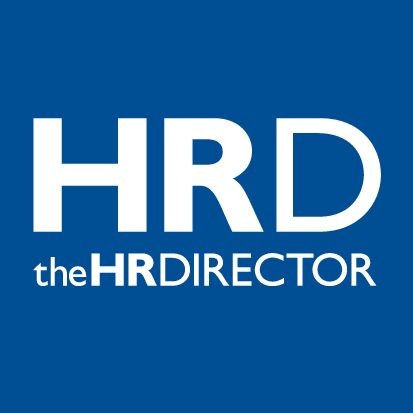For more than a decade, businesses have been investing in omnichannel consumer experiences with an aim to ensure a frictionless, personalized and consistent experience no matter how a customer interacts with the organization. Yet, an Accenture Life Trends 2024 report suggests that these efforts continue to fall short—with 47% of consumers surveyed saying poor customer service makes them feel less valued as customers.
All too often, the problem stems from a business focused only on the end customer experience and not on how teams within the organization get there. This is particularly true among a company’s various content teams, which often operate as independent silos as they deliver product information, online help, employee and customer training, human resources (HR) policies and procedures, upskilling, and other content resources. That can lead to inconsistencies for customers and frustrations for the employees supporting them. And in some industries, these inconsistencies can expose companies to serious compliance gaps and legal risks.
Stressed by Content Silos
As web experiences increasingly replace or augment traditional purchasing and service experiences, businesses are asking employees to produce more content, not only for consumers but also for co-workers who may be selling to, training, or otherwise supporting customers. But because these professionals operate in silos, they often duplicate efforts or need to work sequentially. This slows the delivery of critical information and frequently results in discrepancies across different content sources.
Consider when a company website describes a new product version, but the how-to guides for customers, support team’s knowledgebase, and training manuals for employees or customers offer either contradictory or outdated guidance. It creates stress all around: for customers who can’t get the answers they need to use the new product version; for the support team lacking the resources to readily assist them; and for the content professionals faced with unnecessary redundancies, errors and rework. The frustration also may extend to compliance officers tasked with correcting compliance issues created by inaccurate or out-of-date documentation.
Ultimately all that frustration can negatively impact both customer and employee loyalty.
Cutting Friction via Omnichannel Content Creation
Taking an omnichannel approach to content creation can significantly cut friction for company’s customers and employees alike. Siloed operations are replaced by teams that rely on the same core content to ensure consistency while maximizing collaboration and efficiency. These content creators gain a global view of how to better support customers even as they are empowered to work concurrently and synchronize information delivery.
Before introducing enabling technology, organizations should first introduce an omnichannel mindset across the teams producing content for product guides, online help, knowledge bases, training materials, and policy and procedure manuals. Just as consumers rely on multiple channels to buy and use a product; employees responsible for disseminating information should have access to the same content no matter where it resides. They also should be able to understand what is being produced by other groups and how they can readily repurpose it.
For example, a technical writer’s online product manual content may feed a knowledge base used by the service and support team. That same content may also get automatically exported into online courses–one for onboarding new support engineers and another for updating existing ones–so the training development team can add questions for students, measures of comprehension, and acknowledgement of reading and understanding.
As a result, the content for customers—and the employees supporting them—is consistent. Different content teams across the company can maximize their productivity, and they can readily synchronize their content delivery. Better still, data on how customers and employees use the online product manual, web-based training and knowledge base can provide insights into improving these and other resources.
Connecting Content Sources
To enable omnichannel content creation, organizations need to connect the various systems used for creating, publishing and managing content. For example, a company may have a content management system (CMS) for product documentation and online help, a customer relationship management (CRM) system with an integrated knowledge base for the support team, a learning management system (LMS) for online and in-person courses, and a human resources management (HRM) application that tracks employees’ compliance with certification requirements.
The most effective way to connect the different systems is through a content syndication platform that not only aggregates existing content but also pushes out content to whatever website or other delivery platform is being used. This ensures content consistency and accuracy while enabling different teams to see what content is available and access it to produce new or updated materials. Most organizations rely on application programming interfaces (APIs) to simplify the process of pulling and pushing information between the syndication platform and other systems.
Additionally, businesses will need tools to tag data or content, so information can be readily aggregated and searched. This will become even more important as artificial intelligence (AI) brings new ways to enhance experiences with the company’s content or feed content to build large language models (LLM) for AI consumption.
Omnichannel and AI for Greater Insights
Two applications of AI hold particular promise in fully realizing the power of an omnichannel approach to content. One is applying AI to chatbots or search functionality to help customers quickly get the answers they need, no matter where the information resides. This will further reduce customer friction while improving self-sufficiency, which in turn will free service and support teams to focus on solving more complex customer challenges. Similarly, AI-driven chatbots could help employees to search information in the knowledge base or policy and procedure manuals to get the answers they need faster.
A second application is using AI internally to analyze content to understand what customers and employees are using most and how successfully, where there are gaps between the content available and what users need, and where content redundancies are creating internal inefficiencies. Armed with these insights, content teams will be able to optimize productivity for themselves and their coworkers while enhancing the experiences of customers.
To date, organizations have largely focused on delivering omnichannel experiences to customers. By extending an omnichannel approach across their content teams, companies can strengthen customer loyalty, improve employee productivity and retention, reduce risk, and lay the groundwork to compete on new levels of customer service and business agility.
www.madcapsoftware.com







